Decision Support Imagery help
Overview
The decision support imagery page is designed to provide an image portal which displays static graphics for use in Impact-based Decision Support Services. The page will display a sample graphic once selection are chosen, and provide a URL link for that image at the bottom of the page. Start by selecting the product that will be displayed from the list of:
- G-AIRMET - Graphical advisory of weather that may be hazardous to aircraft, but are less severe than SIGMETs.
- SIGMET - US SIGMETS
- WPC Prog Chart - Weather Prediction Centers Surface Analysis Prog Charts
- SigWx - low level
- SigWx - mid level
- SigWx - high level
- Turbulence - Graphical Turbulence Guidance product depictions which forecasts turbulence driven by, and synchronized with NOAA's "Rapid Refresh" of RAP forecast model.
- Icing - The CIP and FIP graphics are computer-generated three-dimensional analyses of information related to the likelihood of encountering icing conditions.
- TFM gate forecast - Traffic Flow Management gate forecast of significant weather in arrival and departure sectors for the top airports.
The static image will appear at the bottom of the screen with the URL below it. Clear all selections by using the clear selections button, or reset some options by selecting a different product or new parameters.
AWC is transitioning to new DSS graphics. The new images will present consistent data and graphical style as the GFA. This does entail some changes to the specific altitude levels available. New graphics have additionally been added to GFA including 1000 ft MSL wind, turb, and icing as well as mountain wave and clear air turbulence components.
Upgraded graphics: SIGMETs, G-AIRMETs, surface prog charts, turbulence, icing, TCF. Unchanged: color SigWx charts, GFA.
New turbulence levels: 010, 030, 060, 090, 120, 150, 180, 210, 240, 270, 300, 360, 420, 450, >180, <180.
New icing levels: 010, 030, 060, 090, 120, 150, 180, 210, 240, 270, 300, max.
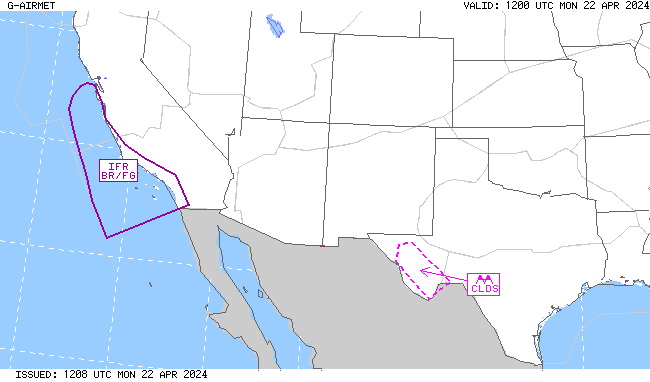
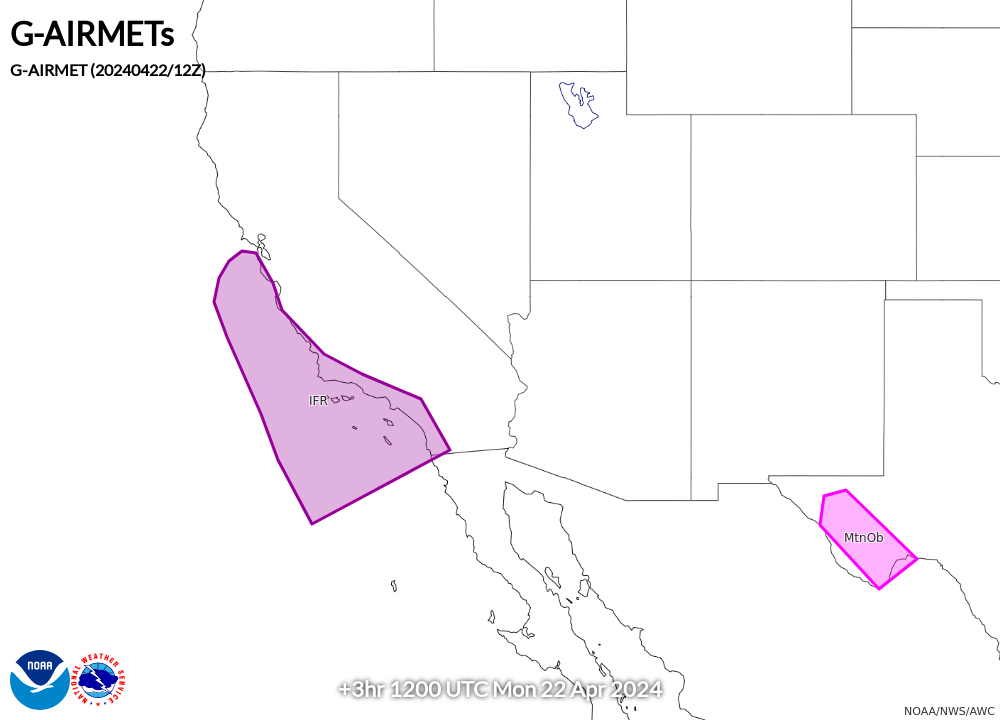
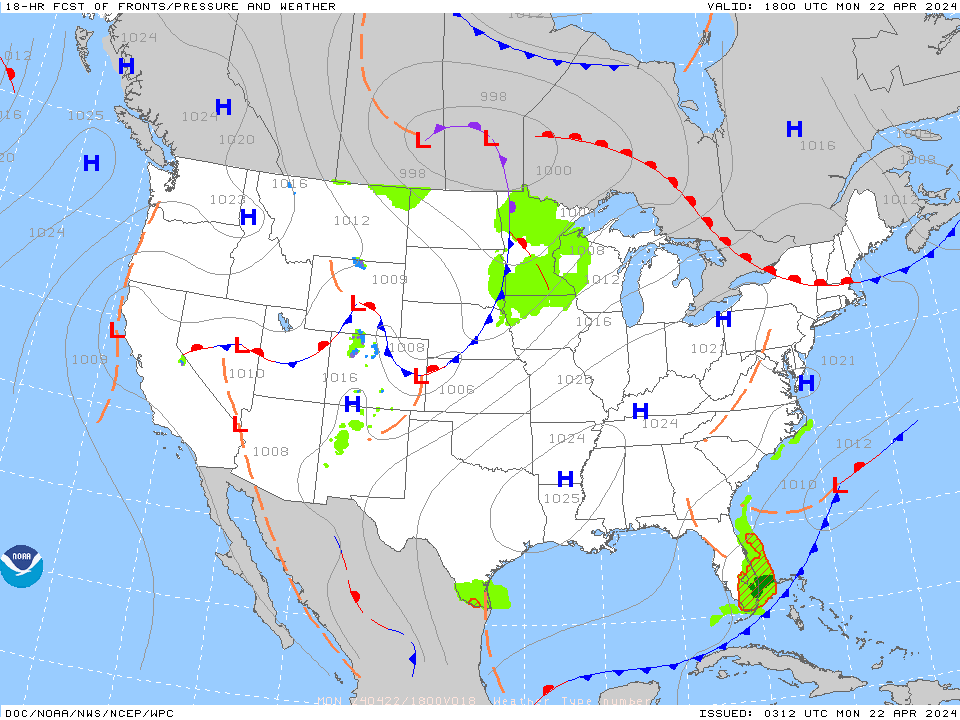
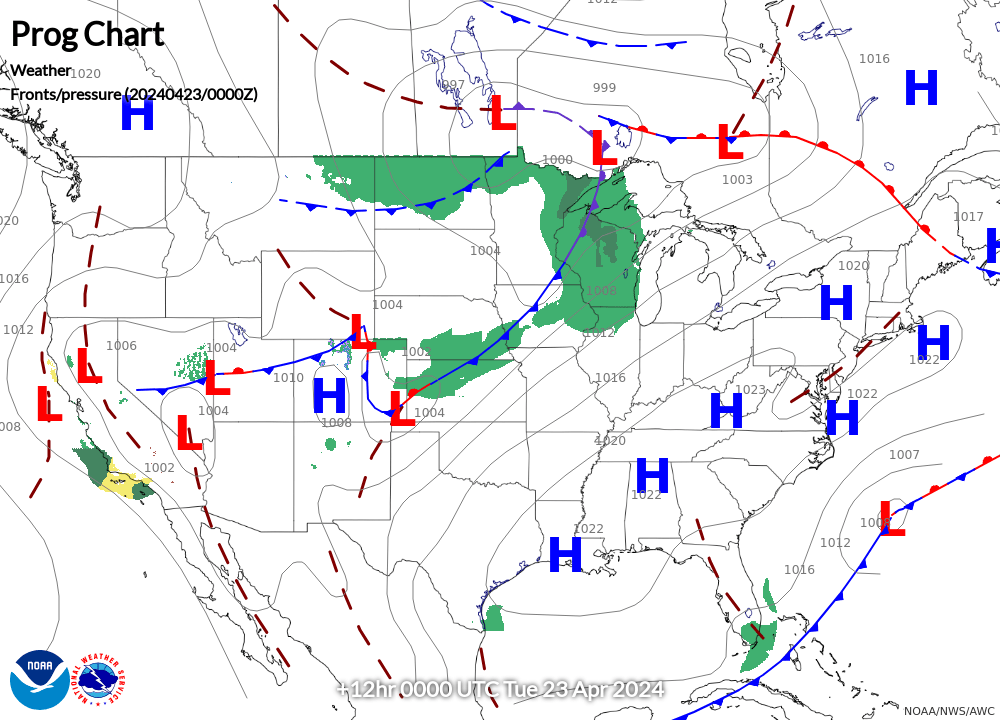
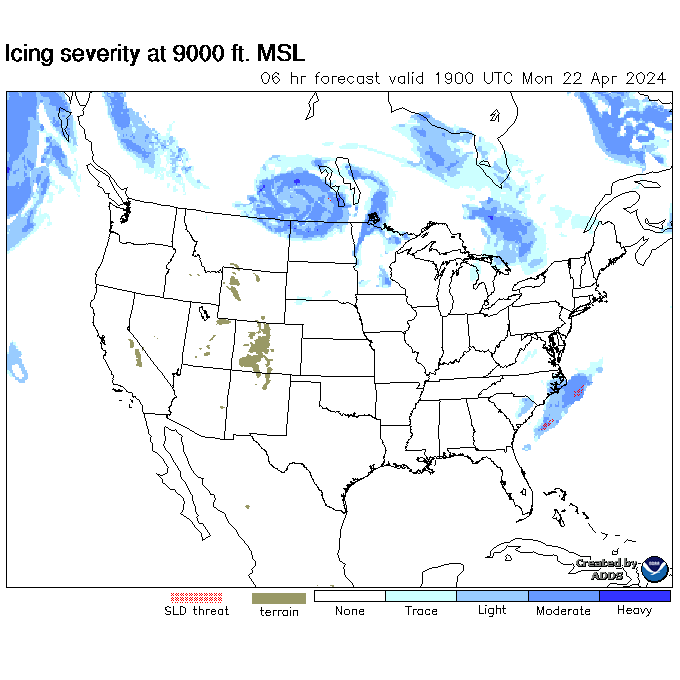
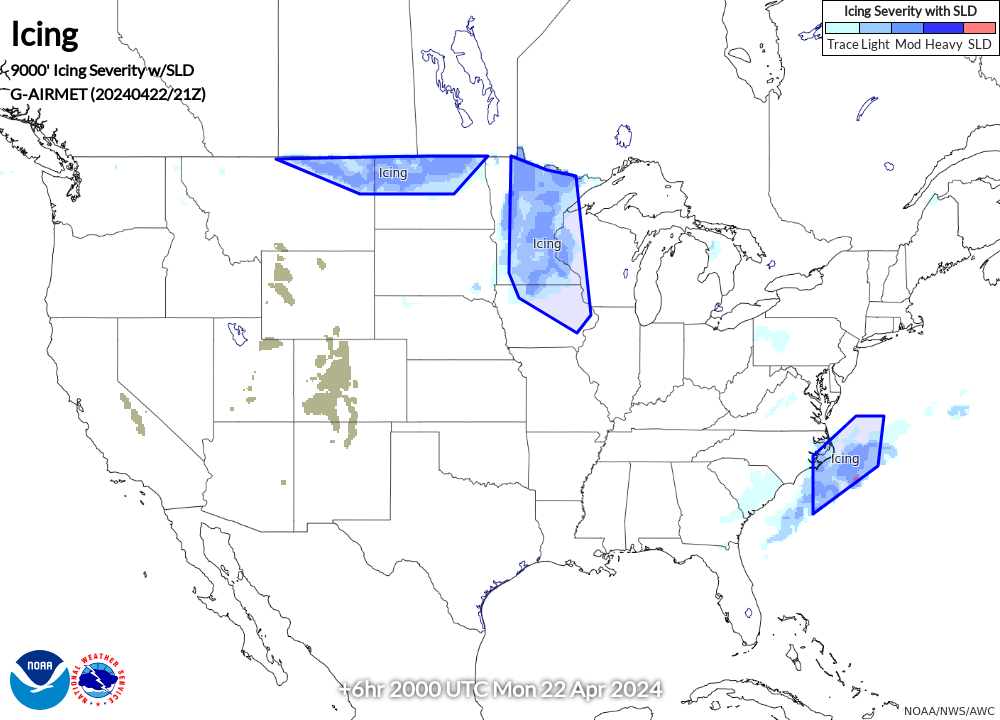
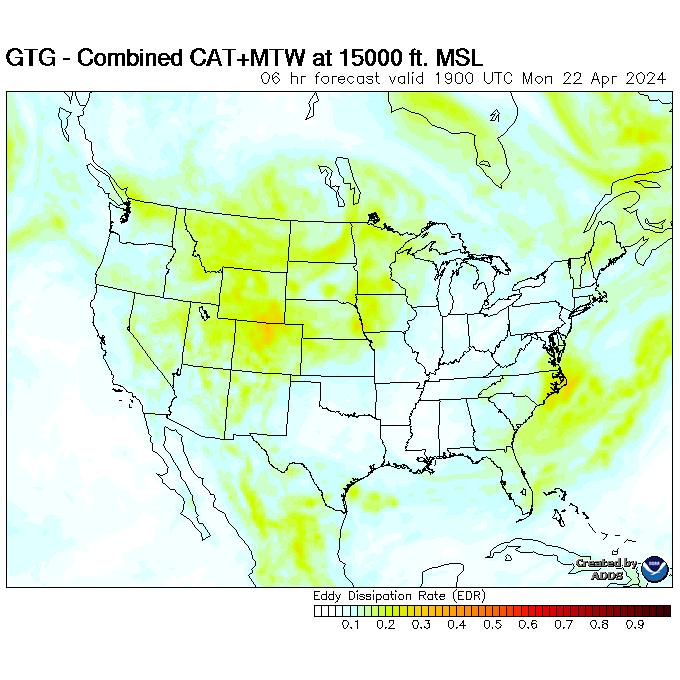
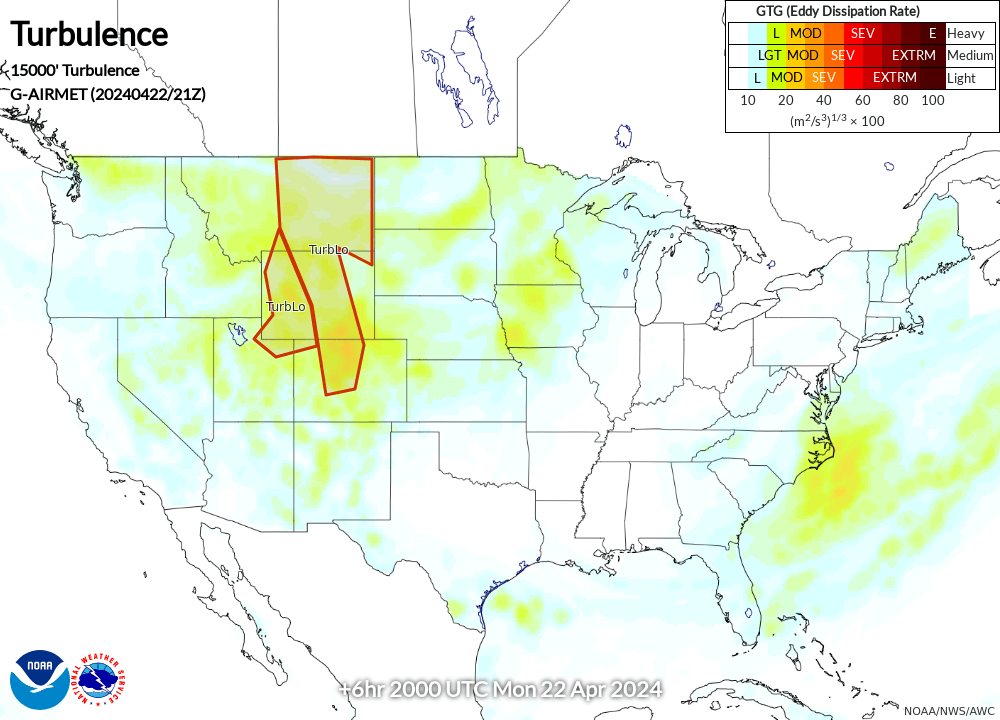
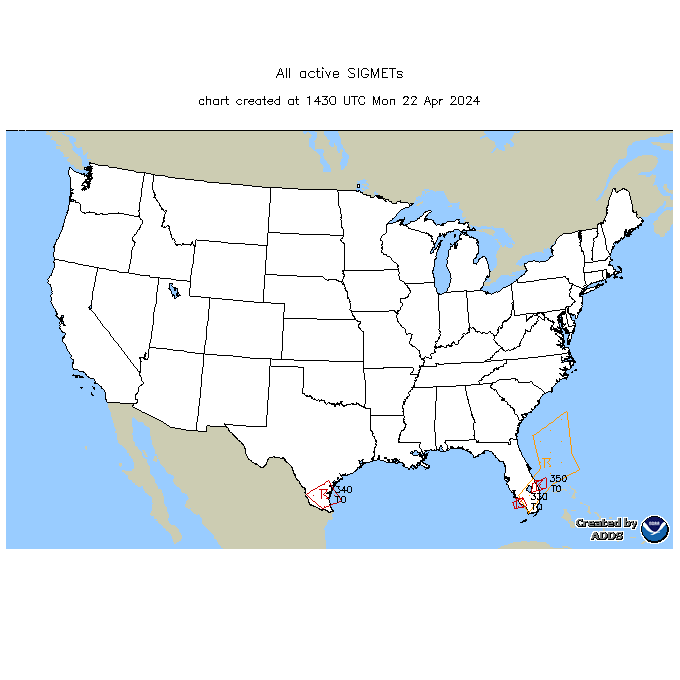
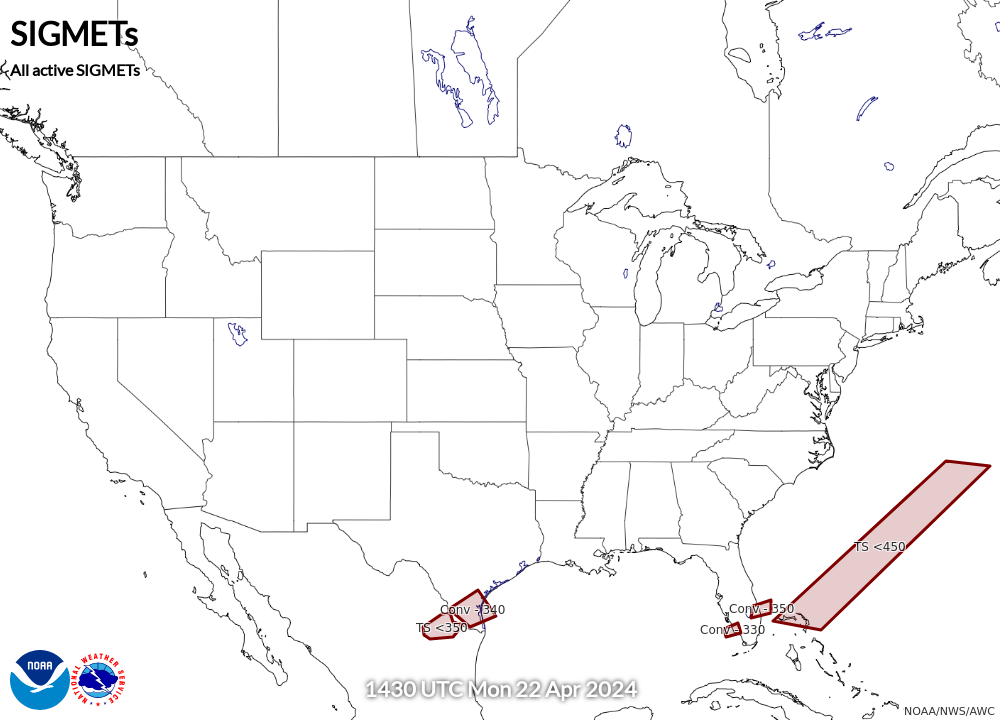
FAQ
What has changed recently?
The entire site was overhauled in October 2023. For information about the most recent updates, please see the change log.
How often do you update the website?
We fix critical bugs as soon as possible, and we deploy functional upgrades regularly. Please let us know if you find something that isn’t working.
Why is my URL link not working?
As part of the upgrade to the site, some pages were consolidated and some URL's have changed. Check out the link conversions to find what you are looking for. If you are still unable to find the information you are looking for, submit a question using the envelope in the top right.
Why can't I log in to my account?
Most features of AviationWeather.gov do not require an account. If you recently signed up for a new account, please check your email (including spam folders) for a confirmation email. Accounts are generally approved within one or two business days.
Where is the METAR page?
The interactive Graphical Forecasts for Aviation observation tab displays METARs along with other current data including surface fronts and radar imagery. To view METARs alone, click on the Layers button at the top right corner of the map and deselect items you do not wish to view. Decoded METARs can be displayed by enabling the "decoded METARs" option in the Map Options under the gear icon on GFA.
Raw and decoded textual METAR data can be displayed by selecting the Products dropdown and selecting METAR data.
Where is the Satellite/Radar page?
Satellite and radar imagery are available on the observations tab of the interactive Graphical Forecasts for Aviation, that displays surface observations, imagery, fronts, and more in one place. Satellite imagery is an optional layer available from the layer selector in the upper right corner of the map. To display satellite or radar imagery alone, deselect items on the layer selector to simplify the display.
How can I submit PIREPs?
Sign up for an account on our registration page, select PIREP Submit Access, and be sure to include your airmen’s certificate number or affiliation with an airline, flight school, government or military organization for validation purposes to streamline the process. Accounts are validated via the FAA Airmen Inquiry.
Then watch your email in order to verify your address and then confirming your account. Once you have an account and are logged in, select "Submit a PIREP" from the Tools dropdown and fill out the form. For more information on PIREP submit, use the link at the bottom, or click here.
How do I access the Flight Path Tool?
The flight path tool is now embedded into the interactive Graphical Forecasts for Aviation map. Click on the route button along the right side of the map to open the display. Enter the airports to navigate, and select the product you wish to display from the dropdown. Watch a video on how to use the cross sections here.
Where is the HEMS (Helicopter Emergency Medical Services) tool?
The HEMS tool has been integrated into the interactive Graphical Forecasts for Aviation. Click on the helicopter button in the upper right part of the map to switch GFA from general aviation mode into low-altitude mode, which offers similar features as the HEMS tool.
What happened to ADDS?
The ADDS static graphics were phased out and replaced with the Graphical Forecasts for Aviation, which offers greater flexibility and configurability; some static graphics continue to be available for decision support. The ADDS Text Data Server has been succeeded by the Data API. Please let us know if you need assistance with the migration.
How can I display list of METARs and/of TAFs? What about decoded products?
The METAR and TAF data pages provide access to raw, tabular, and decoded output that automatically refreshes every five minutes. The page is designed for quick lookups and printability.
Where is the Text Data Server? How do I download METARs?
The Text Data Server was discontinued and has been replaced by the Data API. The new data offerings are more flexible and provide more data. Interfaces designed for greater compatibility with the Data Server to ease the transition as well as cache files to retrieve many reports at once are also available.
How do I access data for previous dates?
The METAR data page displays up to the previous 96 hours of observations. The Archive View allows viewing nearly all products on the site as they were presented for up to the past two weeks. For data more than 14 days old please reference the resources available on bottom of the Archive View page.
Data appears to be missing. Where can I find more information?
Automated status information and the latest announcements can be found on the status page
Why is a particular station not reporting?
The site generally displays all observations within a minute or two of being reported as we receive it. Individual station outages are usual indicative of a problem at the source. AWC does not maintain weather stations or observing platforms.
What do all of the map symbols indicate?
A full listing of map symbols is available.
Why is the map dark?
Dark mode is automatically applied based on systems settings. Selecting the person icon in the upper right and toggling the switch to the left disables this mode.